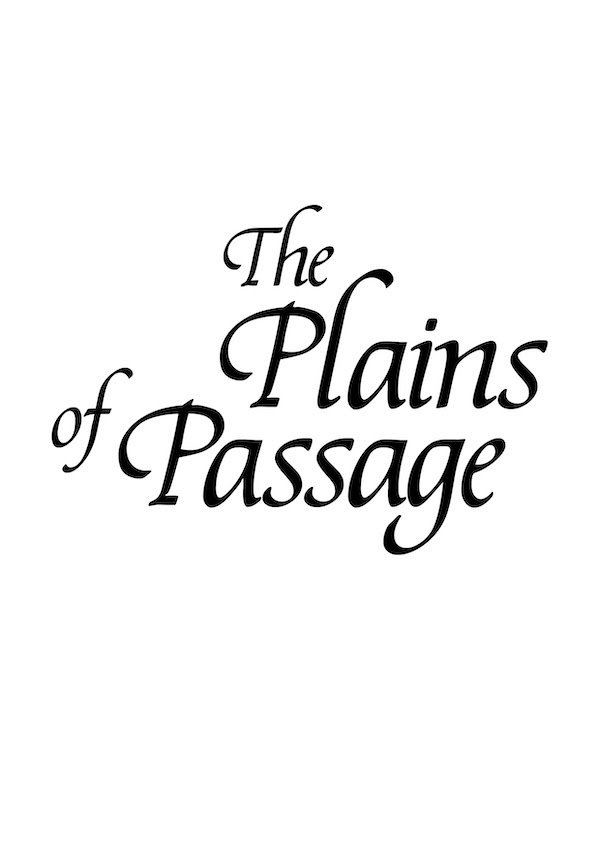Miriam Visaczki
16 nov - 22 dec 2018For Miriam Visaczki’s show “The Plains of Passage” you have to imagine Odin waiting for Huginn and Muninn and they just won’t come back home.

For Miriam Visaczki’s show “The Plains of Passage” you have to imagine Odin waiting for Huginn and Muninn and they just won’t come back home.
“And then they came to a gate. The two wind-swept figures standing amidst the clearing are Ayla and her partner Jondalar on their long and adventurous journey westwards along the Great Mother River, the Danube, and still there is so much more to explore.”

The 760 pages of the History novel The Plains of Passage by Jean M. Auel, sequel to The Mammoth’s Hunters, The Valley of Horses and prequel to The Shelters of Stone, set out to write an unbearded tale of the Pleistocene, which foresees a different fate for its female protagonist than to squat in a cave and wait for her food, supplied by a half-ape. Instead Ayla leaves, embarking on a life in-between tribes, crossing the plains with a horse and a wolf she tamed herself (first time in human history). As the main character is faced with bloody initiations, game changing shamans, and the psychological exploration of animalistic totems, the reader shares in her comfort to be able to fully rely on her mystical intuition which helps her to confidently master her heart in passage. She turns to pouch-making and fur-sewing, leather-bending and wool-knitting, which leaves the old horde in dumbstruck admiration and the new peers in teeth-grinding distrust. The post-feminist novel seeks gender equality in an ancient romance to fictionalize emancipation as “a natural part of life”, opposed to the straining and still ongoing discussion about equal pay. Within, Visaczki shows the contradicting lure of a conservative Fantasy met with the rituals of progress on the gallery’s wide white plains.
The woollen felts show Landscapes of Far Away, views on the settlement, and a pre-historic dispute between a dinosaur and a butterfly. One, an extinct, monstrous relic – the has-been, the other cursed to metamorphize itself from a caterpillar to a symbol of beauty and change. Other felts transform doodles and scribbles into woollen patterns and ornaments, that seem to root from a graphical habit of juvenile expression by the use of the faded, yet intense colour range of textmarkers and other office supply products. Wooden sculptural elements from the same anthroposophical spectrum compose a greyish wall that divides the gallery, which offers a gateway, a passage to slip through. But instead of being a symbolistic take on threshold, exploration and passage, there may be other questions attached to these motifs’ bipolarity. For example: is it an option for me to remain on one of life’s lower floors? This question leads to the Unabomber, neo-paganism and all sorts of right-wing sentiments that can come with or without gentrification, but certainly with identity tales of loss and exclusion murmured among those clutching the slickly spinning spiral of civil progress.
But the question also leads you straight to the half-ape you were and you left behind. Does the horse I domesticated myself really understand me? And that lover that travels the plains with me? What will I tell the new tribe about the old one? What will I tell the old tribe about the new one? Do I really need this wolf?
Well, in moments of doubts you can always bow your head low over the old weathered rune stone and read there whatever you can get out of it. Take for example the two ravens Huginn (Old Norse “thought”) and Muninn (Old Norse “memory”). Huginn and Muninn inform Odin (Old Norse “Gandalf”) about what is happening in the world and report to him at the end of each day. Odin, although generally perceived as a blood-thirsty-warrior-God cares very much about the two ravens. The Edda, in a translation by Benjamin Thorpe, let’s Odin mumble:
Hugin and Munin fly each day
over the spacious earth.
I fear for Hugin, that he come not back,
yet more anxious am I for Munin.
For Miriam Visaczki’s show “The Plains of Passage” you have to imagine Odin waiting for Huginn and Muninn and they just won’t come back home.
Kilde: Christian Andersen
1220 København K
Tirsdag: Lukket
Onsdag: 12 - 18
Torsdag: 12 - 18
Fredag: 12 - 18
Lørdag: 12 - 15
Søndag: Lukket